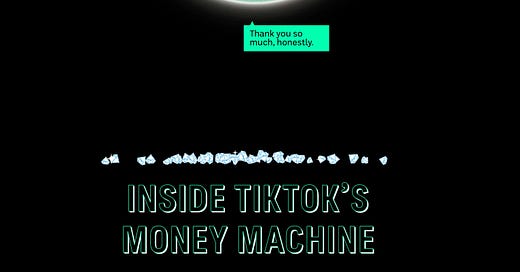Investigating the wild world of TikTok live streaming
This month, Julian Fell and Patrik Wikström take you inside their investigation into the wild world of live streaming on TikTok, where some viewers spend hundreds of thousands of dollars a year and creators compete for a share of the spoils. The amount of money being spent, and how much of it went to the creators, is obscured by a system of in-game coins, gifts and diamonds. Julian and Patrik will explain the data scraping experiment they ran to peek under the hood and see who gets what.
Event details
When: 5:30pm, Wednesday 22 May
Where: ABC Brisbane, 114 Grey St, South Brisbane
Register: Humanitix
Last month – Black Justice Journalism
Last month Dr Amy McQuire spoke on “Black Justice Journalism” which she framed as an alternative to a failing mainstream media. In recent times she has looked to Indigenous and Palestinian journalists to find a very different way of doing journalism.
Amy described how the violence carried out by the mainstream coverage of the NT intervention radicalised her and how two stories from the banks of the river Toonooba, in Rockhampton where she grew up, set her up to tell stories from a specifically Sovereign Black perspective.
The first story is about the murder of a strong proud Aboriginal woman, Linda, killed on the river bank. She noted how Linda was only ever spoken about in two ways - as a mother and as someone from South Australia. Mainstream coverage did not grant her any more humanity than that. The story of Linda’s death was similar to that of Auntie Queenie Hart, who was killed on the same banks sixteen years earlier. In that case a white man walked free within a few hours of the trial beginning.
The mainstream account of both stories targeted these two Aboriginal women with dehumanising tropes. A common response to dehumanisation is humanisation. However “humanising” women like Linda and Auntie Queenie can be a way of bringing their representation closer to that of white women. In this way humanisation can itself be silencing. It is a political strategy that revolves around making Aboriginal women more “worthy” in white terms.
For both these stories Amy explored how to write on violence without reproducing violence. Amy outlined the notion of “presencing” drawing on the work of Michi Saagiig Nishnaabeg scholar Leanne Betasamosake. Presencing involves five key pillars: responsibility, reciprocity, resurgence, repatriation and relationality (you can read more about presencing from Amy and others here).
Amy closed out her talk by considering the role that data might play in telling stories about the disappearances of Aboriginal women. On the one hand, reducing the crisis of femininicide (a term borrowed from Rosa-Linda Fregoso, incorporating ideas of impunity and state accountability) to statistics risks concealing the true stories of what has happened and the personhood of the women. Amy proposed a database that doesn’t make this reduction. Such a database would help apprehend the scale of femininicide in Australia, aim to break the silence surrounding Indigenous femininicide in Australia, and use a methodology of presencing, foregrounding Indigenous sovereignty.
The public face of a database would be an act of giving the story back to families to tell.
There was a rich discussion following Amy’s presentation talking through the possibilities of Black Justice Journalism and how a femininicide database might work.
From elsewhere
This month’s speaker Julian and MediaWatch were responsible for the ABC’s sting on a network of AI-plagiarised sports websites linked to a lawyer working for Australian Community Media.
Rudi Bremer and Daniel Browning, also at ABC, gave readers an experience of Archie Moore’s celebrated Venice Biennale installation, kith and kin.
Nick Dent and Marissa Calligeros in the Brisbane Times used geographical coffee sale data to debunk myths about who drinks lattes.
In The Fix Anton Protsiuk has seven ways to build a stronger newsroom culture.
See you next week!




